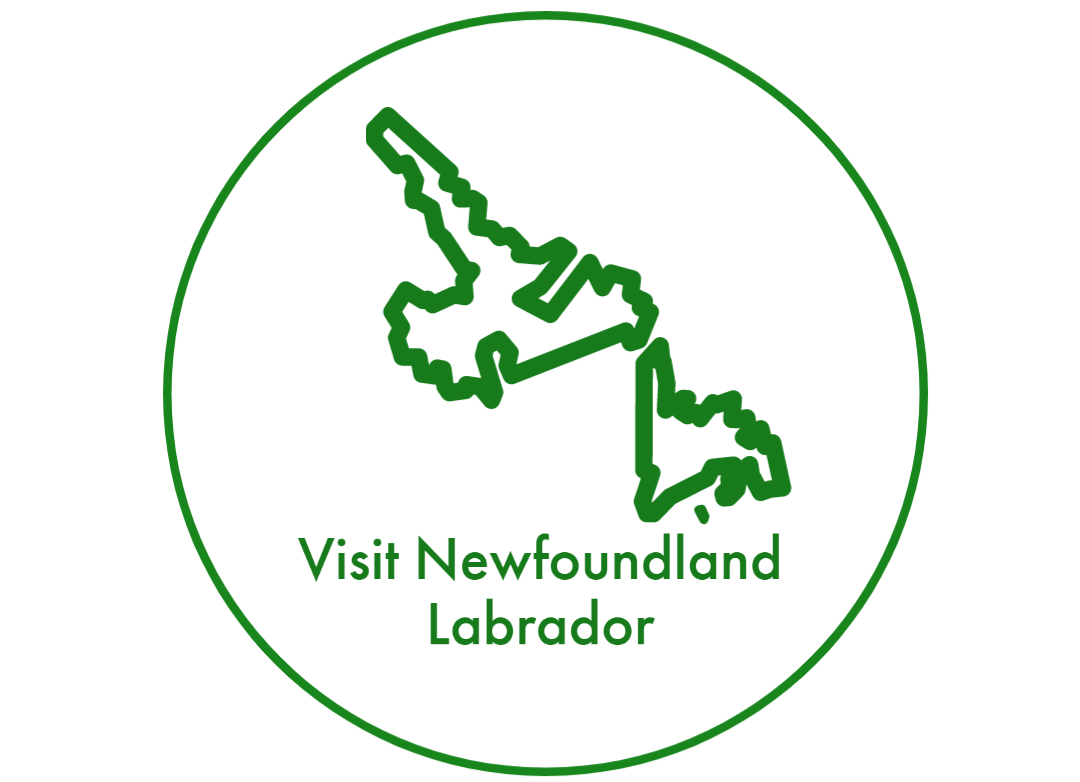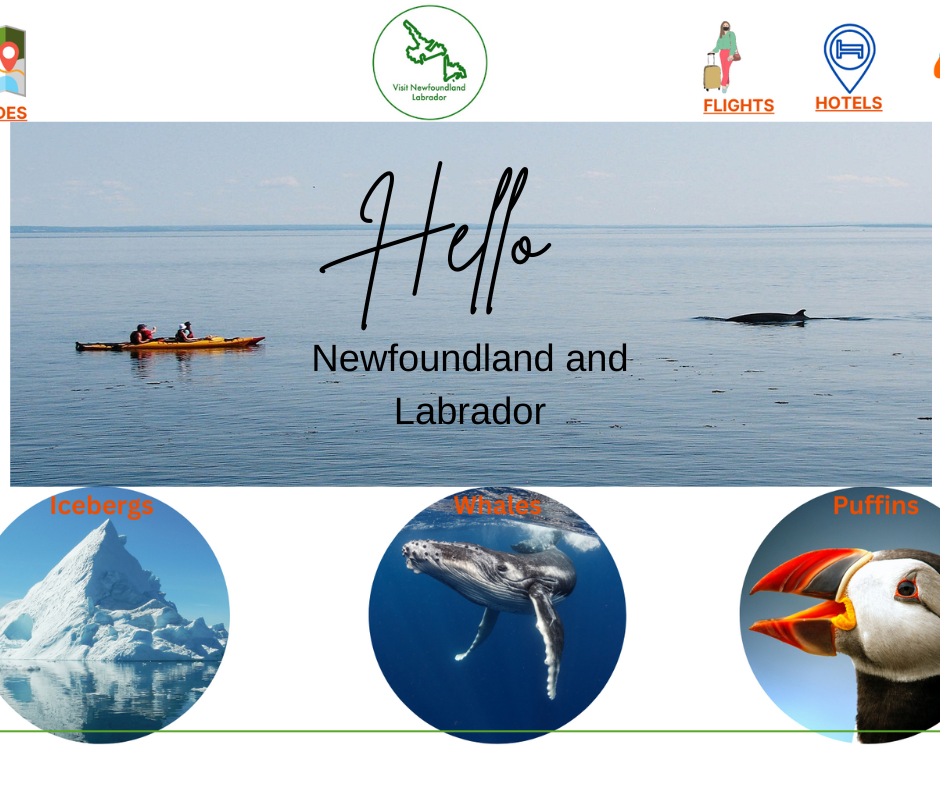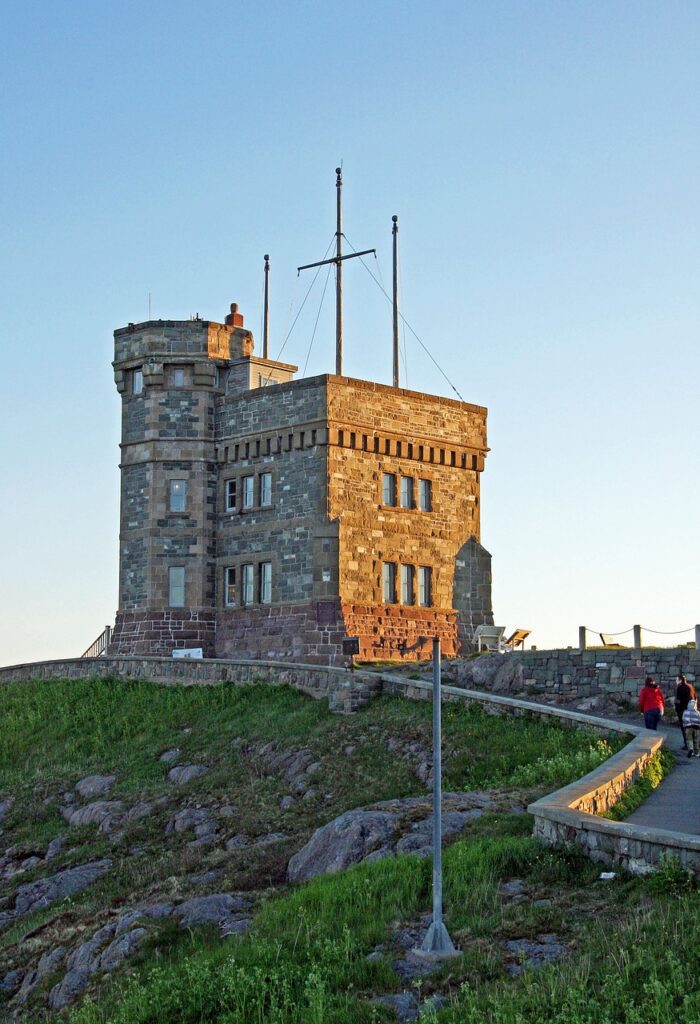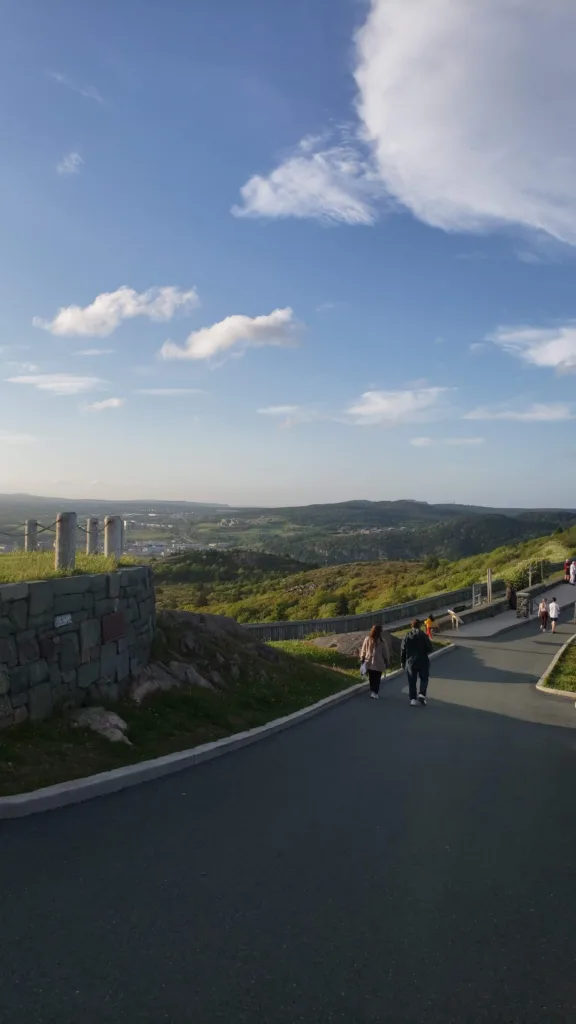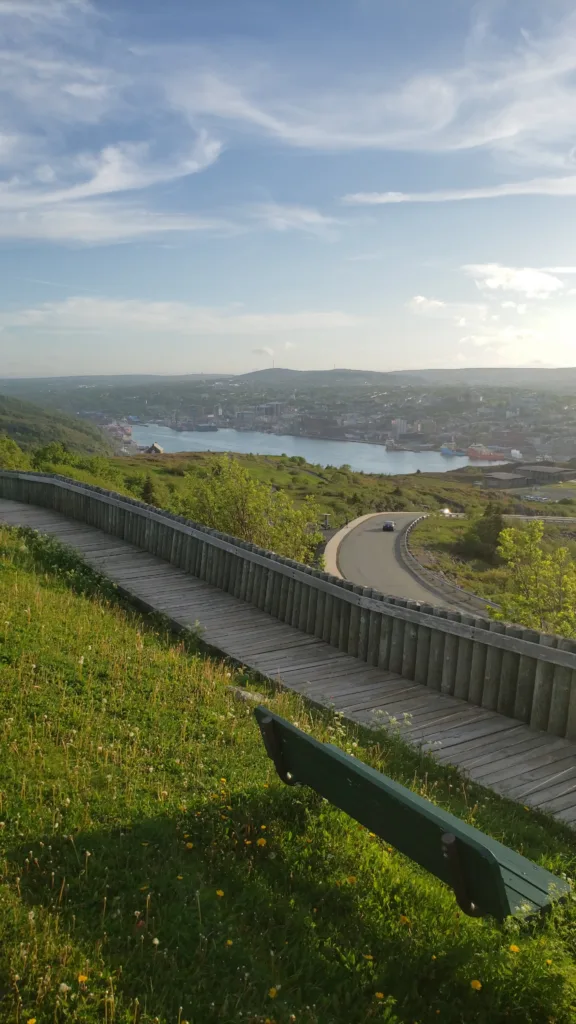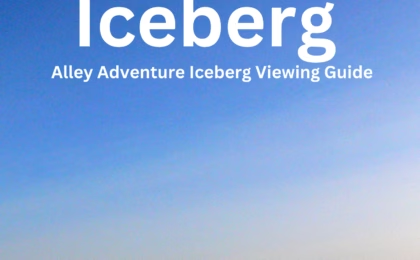10 Must-See Natural Wonders of Newfoundland and Labrador
Enjoy these 10 Must-See Natural Wonders of Newfoundland and Labrador with your friends and family. Newfoundland and Labrador, with its breathtaking landscapes and pristine wilderness, offers a wealth of natural wonders to explore. This province is a paradise for nature enthusiasts, from towering cliffs to stunning fjords. This blog post presents a curated list of the top 10 must-see natural wonders in Newfoundland and Labrador. Whether you’re a hiker, a wildlife lover, or simply seeking awe-inspiring beauty, these destinations will leave you spellbound.
Gros Morne National Park:
Discover the UNESCO World Heritage site of Gros Morne National Park, renowned for its ancient mountains, fjords, and unique geological features. Explore the towering Gros Morne Mountain, hike scenic trails, and witness the dramatic Western Brook Pond fjord.
Address: Western, Newfoundland and Labrador
Official site: https://parks.canada.ca/pn-np/nl/grosmorne
Iceberg Alley:
Learn about Iceberg Alley, a stretch of the Newfoundland and Labrador coast where massive icebergs float by each spring. Discover the science behind iceberg formation and the best locations to spot these majestic frozen giants. Many communities are situated along the coastal region, referred to as Iceberg Alley.
Address: Coast of Labrador to the Southeast Coast of Newfoundland
Official site: https://www.newfoundlandlabrador.com/things-to-do/iceberg-viewing
Cape Spear:
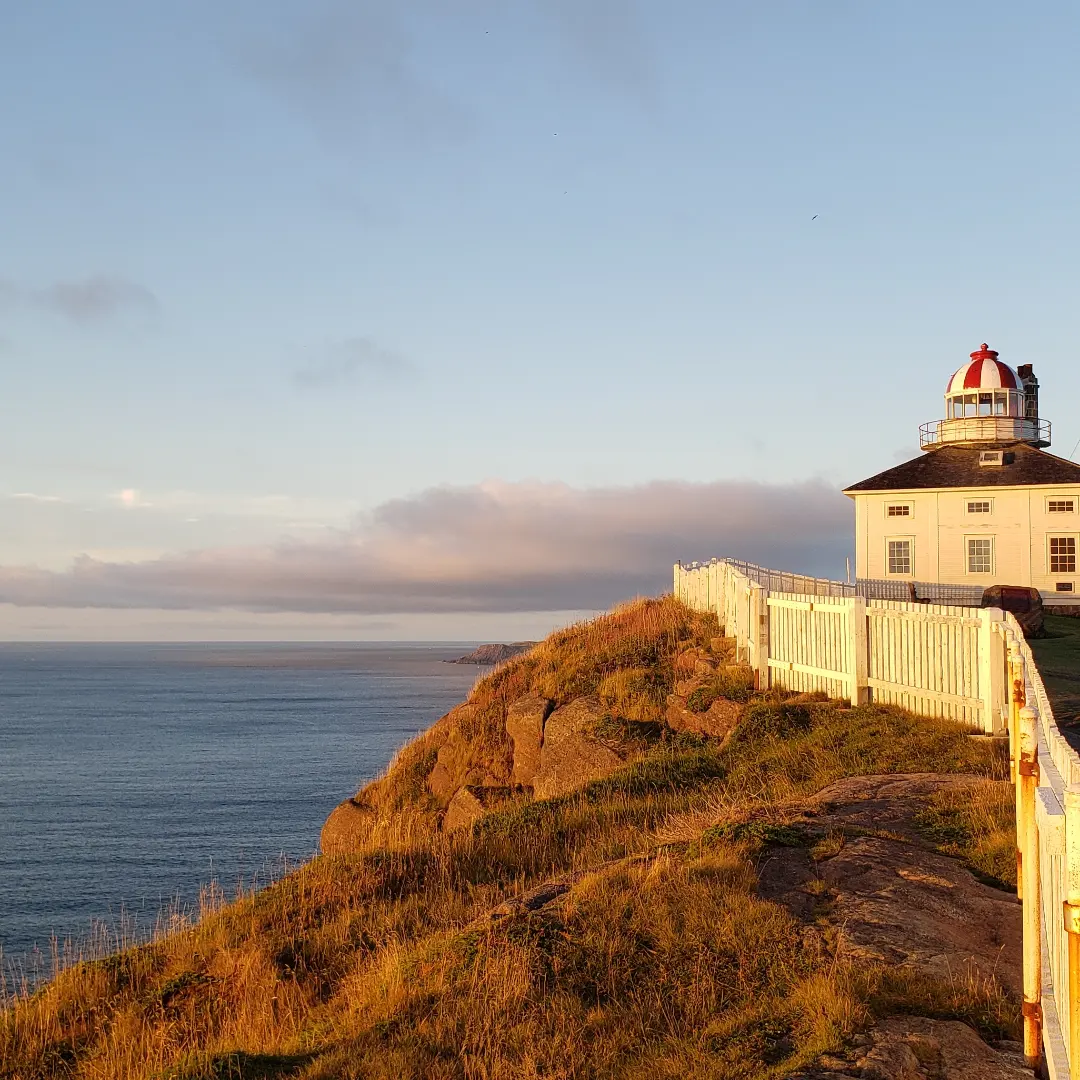
Uncover the easternmost point in North America at Cape Spear. Explore the historic lighthouse, take in panoramic views of the rugged coastline, and witness the mesmerizing collision of the Atlantic Ocean against the rocky cliffs.
Address: Blackhead Road, Cape Spear, St. John’s, NL
Official site: https://www.newfoundlandlabrador.com/top-destinations/cape-spear
L’Anse aux Meadows:
Transport yourself back in time at L’Anse aux Meadows, a UNESCO World Heritage site that showcases the only known Viking settlement in North America. Delve into the Viking history, visit reconstructed Norse buildings, and immerse yourself in the area’s rich cultural heritage.
Address: Western, Newfoundland and Labrador
Official site: https://parcs.canada.ca/lhn-nhs/nl/meadows
Terra Nova National Park:
Experience the beauty of Terra Nova National Park, where boreal forests, coastal cliffs, and sheltered bays converge. Discover the diverse wildlife, hike scenic trails, and engage in water-based activities such as kayaking and boating.
Address: Trans Canada Highway Glovertown, Traytown, NL
Official site: https://parks.canada.ca/pn-np/nl/terranova
The Tablelands:
Unearth the unique geological wonder of the Tablelands, where exposed mantle rock creates a striking, Mars-like landscape. Learn about the geological processes that shaped this area and embark on a guided hike to witness its stunning natural beauty up close.
Address: In Gros Morne National Park , Newfoundland and Labrador
Official site: https://parks.canada.ca/pn-np/nl/grosmorne/activ/experiences/tablelands
Torngat Mountains National Park:
Embark on an unforgettable adventure to Torngat Mountains National Park, a remote and pristine wilderness. Discover towering peaks, cascading waterfalls, and abundant wildlife, including polar bears and caribou.
Address: Torngat Mountains, Nain, NL
Official site: https://parks.canada.ca/pn-np/nl/torngats
More Newfoundland and Labrador Travel Guides
- 15 Destinations For The Most Family Fun In Newfoundland
- The Best Hotels In St. John’s Newfoundland For Your Stay
- The best 11 Newfoundland destinations for families to travel
- 12 Of The Best Beaches In Newfoundland To Visit
- 10 Surprising Places To See This Summer In Newfoundland
- The Best Memorable Tourist Things To Do In Newfoundland Now
Signal Hill:
Ascend Signal Hill, an iconic landmark overlooking St. John’s, the capital city of Newfoundland and Labrador. Explore the historic Cabot Tower, soak in panoramic views of the city of St. John’s and the Atlantic Ocean, and learn about the area’s rich history.
Address: 230 Signal Hill Road, St. John’s, NL
Official site: https://parks.canada.ca/lhn-nhs/nl/signalhill
Humber Valley:
Indulge in the natural splendour of the Humber Valley, with its majestic river, lush forests, and scenic landscapes. Enjoy hiking, fishing, or golfing, and witness the vibrant fall foliage during autumn.
Address: Western, Newfoundland and Labrador
Official site: https://www.newfoundlandlabrador.com/top-destinations/humber-valley
Mistaken Point Ecological Reserve:
Discover the ancient treasures of Mistaken Point Ecological Reserve, a UNESCO World Heritage site boasting an extraordinary Ediacaran fossils collection. Learn about the significance of these fossils and join guided tours to explore this remarkable geological site.
Address: Portugal Cove South, NL
Official site: https://mistakenpoint.ca/
Newfoundland and Labrador truly captivate with its inspiring natural wonders. Whether you’re seeking adventure, tranquillity, or a deeper connection with nature, the province offers various unforgettable experiences. Explore these 10 must-see natural wonders and immerse yourself in the beauty and wonder of this remarkable region. Plan your journey today and be prepared to be amazed by the raw and untouched beauty of Newfoundland and Labrador.
What is Special About Cape Spear?
Cape Spear, located near St. John’s, Newfoundland, is renowned for its historical and geographical significance. It boasts the oldest surviving lighthouse in Newfoundland and Labrador and is designated a National Historic Site. Visitors can explore the restored lighthouse and learn about the region’s Atlantic history. Additionally, Cape Spear offers stunning coastal views, dramatic cliffs, and whale and bird-watching opportunities.
Is Cape Spear the Most Easterly Point in North America?
Yes, Cape Spear is indeed the most easterly point in North America. This geographical distinction makes it a popular spot for tourists who want to experience the continent’s eastern edge.
How Long to Spend at Cape Spear?
You should typically spend about 1 to 2 hours at Cape Spear. This time allows for exploring the historic lighthouse, walking along the scenic trails, and taking in the breathtaking views of the Atlantic Ocean.
What is the Farthest East Point in Newfoundland?
Cape Spear is the farthest east point in Newfoundland. Its geographical position marks it as the easternmost point of both the island of Newfoundland and North America.
What is the Farthest Point East in Canada?
Cape Spear holds the title for the farthest point east in Canada.
Are There Two Lighthouses at Cape Spear?
Yes, there are two lighthouses at Cape Spear. The original lighthouse has been restored to its 19th-century appearance. A newer lighthouse was constructed, is still operational, and provides vital navigation aid.
Can You Drive to Cape Spear?
Yes, you can drive to Cape Spear. It is accessible via Blackhead Road from St. John’s and has a visitor parking area.
Can You See Europe from Newfoundland?
No, you cannot see Europe from Newfoundland. The distance across the Atlantic Ocean is too vast for Europe to be visible from Newfoundland.
Is Cape Spear Worth It?
Cape Spear is worth visiting. Its historical significance, stunning coastal scenery, and the experience of standing at North America’s easternmost point make it a memorable destination.
Are Dogs Allowed at Cape Spear?
Yes, dogs are allowed at Cape Spear but must always be kept on a leash.
What is the Most Eastern Point in North America?
The most eastern point in North America is Cape Spear, Newfoundland.
What is the Most Remote Town in Newfoundland?
The most remote town in Newfoundland is Nain, located in northern Labrador and only accessible by air or boat.
What is Special About Gros Morne National Park?
Gros Morne National Park is unique for its dramatic geological features, including the Tablelands, a rare example of exposed Earth’s mantle. The park’s varied landscape of fjords, mountains, and coastal lowlands is a UNESCO World Heritage Site. It offers unique hiking experiences, diverse wildlife, and spectacular scenery.
How Many Days Do You Need in Gros Morne National Park?
To fully experience Gros Morne National Park, plan to spend at least 3 to 5 days. This timeframe allows for hiking, exploring geological sites, and enjoying the natural beauty and wildlife.
What is the Best Time of Year to Visit Gros Morne Park?
The best time to visit Gros Morne National Park is June to early September. The weather is mild during this period, most facilities are open, and the hiking trails are accessible.
Can You Actually Drive Through Gros Morne National Park?
Yes, you can drive through Gros Morne National Park. The park has a network of roads that connect various points of interest, making it accessible for visitors travelling by car.
Can You Hike Gros Morne Trails Without a Guide?
Yes, you can hike in Gros Morne without a guide. The park offers numerous marked trails suitable for self-guided hikes. However, hiring a guide can enhance the experience for more challenging or less well-known routes.
Are There Bears in Gros Morne?
Yes, there are black bears in Gros Morne National Park. Visitors should know their presence and follow safety guidelines to avoid encounters.
Do You Have to Pay to Visit Gros Morne National Park Areas?
Yes! There is an entrance fee to visit Gros Morne National Park Areas. Park Fees contribute to the maintenance and preservation of the park.
What is the Best Month to Visit Newfoundland?
The best month to visit Newfoundland is July. The weather is warm, the landscape is lush, and many festivals and events occur during this time.
Can You See Whales in Gros Morne?
Yes, you can see whales in Gros Morne National Park. Whale watching is popular, especially from May to September, when various species, including humpbacks and minke whales, are frequently spotted.
How Do You Get Around Gros Morne National Park?
You can drive, bike, or hike around Gros Morne National Park. The park’s roads and trails connect vital attractions, and some areas are accessible by boat.
What Towns Are Near Gros Morne National Park?
Towns near Gros Morne National Park include Rocky Harbour, Norris Point, and Woody Point. These communities provide accommodations, dining, and other visitor services.
How Long Does It Take to Hike Gros Morne?
Hiking the trail to the summit of Gros Morne Mountain typically takes 7 to 8 hours for a round trip. The hike is challenging, requiring good physical fitness.
How Do I Get to Gros Morne from St. John’s?
To get to Gros Morne from St. John’s, you can drive (about 7-8 hours), take a bus, or fly to Deer Lake Regional Airport and then drive to the park (a 30-45 minute drive).
Is There Cell Service in Gros Morne National Park?
Cell service in Gros Morne National Park is limited. Coverage is generally available in larger communities and along major roads, but it may be spotty or nonexistent in more remote areas.
How to See the Fjords in Gros Morne?
To see the fjords in Gros Morne, take a boat tour of Western Brook Pond, a stunning fjord. These tours offer spectacular views of the fjord’s cliffs and waterfalls.
What is the Hardest Hike in Newfoundland?
The Long Range Traverse in Gros Morne National Park is the most challenging hike in Newfoundland. This multi-day backcountry trek requires navigation skills and excellent physical conditioning.
Are There Black Flies in Gros Morne?
Black flies are present in Gros Morne, especially in late spring and early summer. Visitors should bring insect repellent and protective clothing.
Can Kids Hike Gros Morne?
Yes, kids can hike in Gros Morne. Family-friendly trails like the Green Gardens Trail and the Lookout Hills Trail offer moderate difficulty and scenic views.
Are There Moose in Gros Morne?
Yes, moose are common in Gros Morne National Park. They are often seen along trails and roadsides.
Do People Live in Gros Morne National Park?
There are small communities within Gros Morne National Park where people live, including Rocky Harbour and Norris Point.
Is Newfoundland Expensive to Visit?
Newfoundland can be moderately expensive to visit, especially during peak tourist season. Costs for accommodations, transportation, and activities can add up, but budget travellers also have options.
What Month Do You See Icebergs in Newfoundland?
The best months to see icebergs in Newfoundland are May and June. During this time, icebergs drift south from Greenland and can be viewed from the coast.
What is the Wettest Month in Newfoundland?
The wettest month in Newfoundland is typically October, with frequent rain and storms.
Are There Puffins in Gros Morne National Park?
While puffins are not commonly found within Gros Morne, nearby areas like Elliston, Bonavista, and Witless Bay Ecological Reserve offer excellent puffin viewing opportunities.
What Animals Live in Gros Morne?
Gros Morne is home to various animals, including moose, caribou, black bears, foxes, and numerous bird species.
What is Special About the Tablelands?
The Tablelands are unique because they are a rarely exposed section of the Earth’s mantle, thrust by tectonic forces. This geological anomaly is one of the reasons Gros Morne is a World Heritage Site.
What is the History of the Tablelands?
The Tablelands were formed over 450 million years ago during the continental collision that created the Mountains. Their unique geology has fascinated scientists and visitors.
How Long is the Tablelands Hike?
The Tablelands Trail is about 4 kilometres and takes 1.5 to 2 hours to complete. The trail offers insight into the unique geological landscape.
How to See the Tablelands?
You can see the Tablelands by hiking the Tablelands Trail or taking a guided tour offered by Parks Canada, which provides in-depth information about the area’s geology.
How Old Are the Tablelands?
The rocks of the Tablelands are over 450 million years old.
How Are the Tablelands Formed?
The Tablelands were formed when a piece of the Earth’s mantle was pushed to the surface by tectonic forces. This process is rare and has created the distinctive barren landscape of the Tablelands.
Why is Gros Morne Famous?
Gros Morne is famous for its stunning geological formations, including the Tablelands and Western Brook Pond fjord. Its diverse landscapes and status as a UNESCO World Heritage Site make it a prominent natural attraction.
What Do Newfoundland Tablelands Consist Of?
Newfoundland Tablelands consist of rock from the Earth’s mantle. The high mineral content in the stones gives the Tablelands a distinctive brownish-orange colour and barren appearance.
What is Newfoundland First Language?
Newfoundland first language is English. However, French and indigenous languages are also part of the region’s cultural heritage.
What is Special About L’Anse aux Meadows?
L’Anse aux Meadows is unique because it is North America’s only confirmed Viking site. It provides evidence of Norse exploration in Newfoundland and Labrador.
Is L’Anse aux Meadows Worth It?
L’Anse aux Meadows is worth visiting for its Viking historical significance and the opportunity to explore a Viking settlement. The site offers reconstructed Norse buildings and exhibits about Viking life and exploration.
Why Was L’Anse aux Meadows Abandoned?
L’Anse aux Meadows was likely abandoned due to a combination of harsh weather, limited resources, and potential conflicts with indigenous populations.
How Much Time Does It Take to See L’Anse aux Meadows?
Visitors typically spend 2 to 3 hours exploring L’Anse aux Meadows. This allows time to tour the site, visit the interpretive center, and participate in guided tours.
How Long Did the Vikings Stay in L’Anse aux Meadows?
The Vikings are believed to have stayed at L’Anse aux Meadows for about ten years. The settlement served as a temporary base for explorations of North America.
What Likely Happened to L’Anse aux Meadows Viking Colony?
The Viking colony at L’Anse aux Meadows was likely abandoned due to challenging living conditions and difficulty sustaining the settlement in a remote and harsh environment.
Where is the Oldest Viking Settlement in Canada?
The oldest Viking settlement in Canada is L’Anse aux Meadows. L’Anse aux Meadows is located on the northern tip of Newfoundland.
Where Did Vikings Land in Newfoundland?
Vikings landed at L’Anse aux Meadows, which served as a base for further explorations of the region.
These are the best travel planning resources you should use.
Looking to book your trip to Newfoundland and Labrador? Use these resources that are tried and tested by other travellers like you who vacation in Newfoundland and Labrador. Bookmark these links. Save them for future reference.
Booking Flights, Hotels or B&B: Start planning your next vacation trip by finding the best flight, hotel or b&b deals. Book Here
Finding things to do in Newfoundland and Labrador on TripAdvisor and Viator is not hard. Enjoy boat tours, whale watching, icebergs watching, kayaking and other activities.
You can also find low prices on hotels, B&B and cabins with these two providers. If you are located in Canada, the USA, the UK or Europe, use Booking.com, and if you are in Canada, the USA or anywhere else, use TripAdvisor.
Car Rental: Here is what we recommend:
When you book with Rentalcars.com, you can compare prices and find the best vehicle for your trip. Economybookings.com Display all their vehicle on the website with a detailed description. They display high-quality photos and a user rating as well. Qeeq.com serves road trip travellers like you from different countries by working with car rental companies worldwide.
Get compensated if your flight is delayed or cancel
AirHelp and Compensateair will help you with flight delays, cancellations, or denied boarding. All you need to do is to submit your flight details, and they will handle the claim process on your behalf. They will handle all the paperwork, airline negotiations, and legal proceedings.
Do you need more help planning your trip?
Check out our Resources Page, where we highlight all the resources and companies you can use to assist with your planning.
